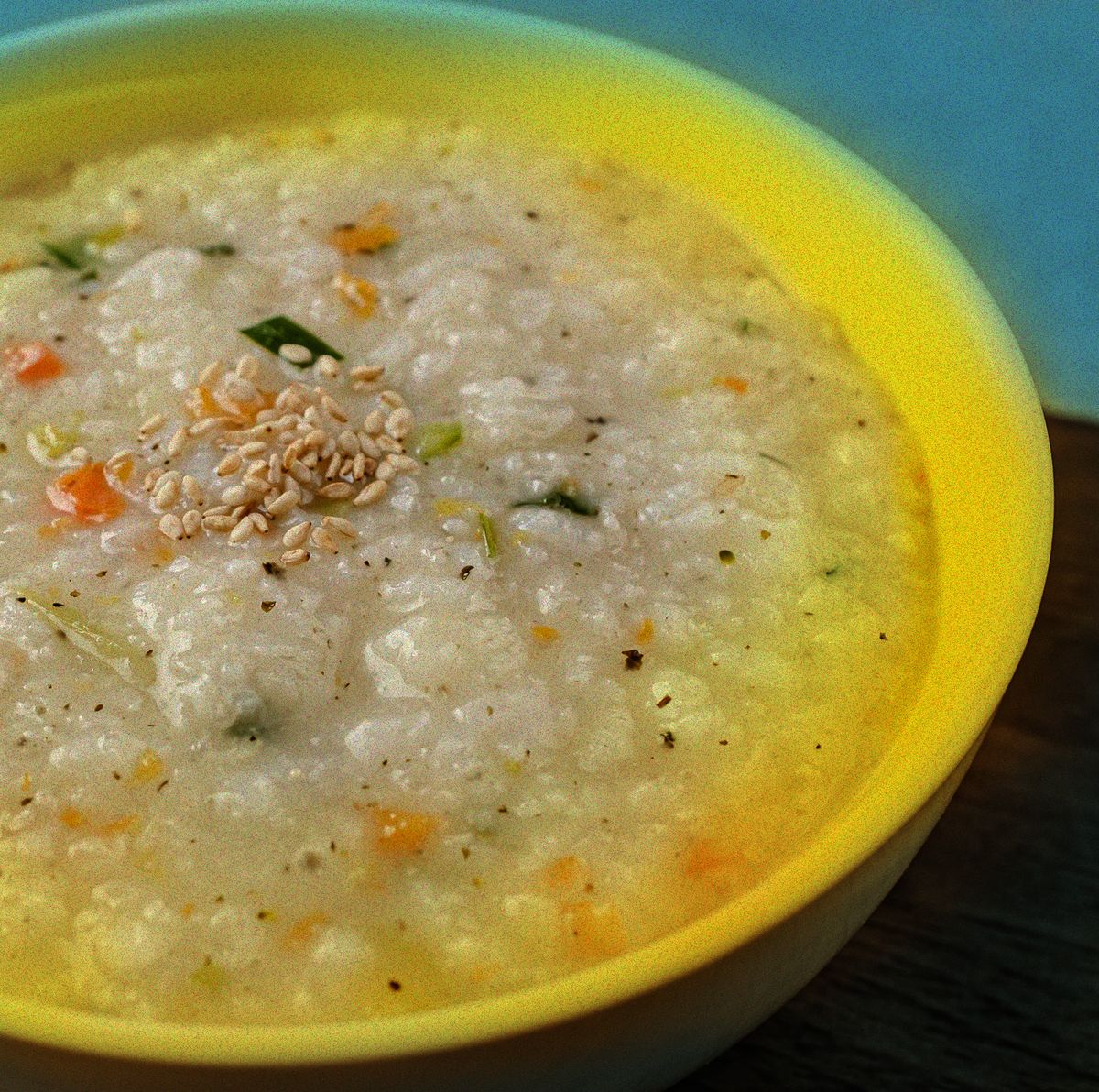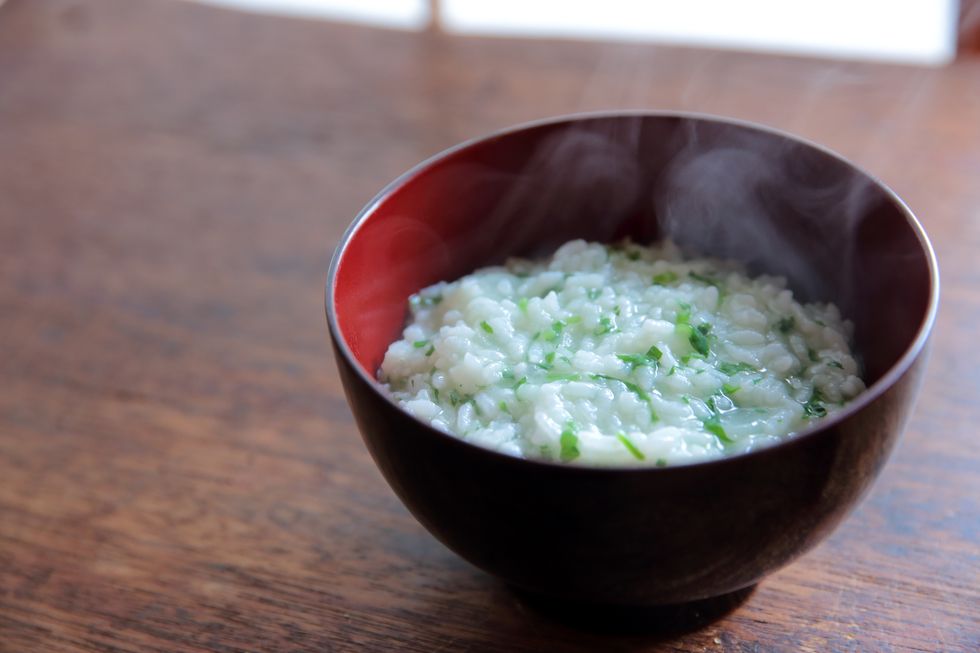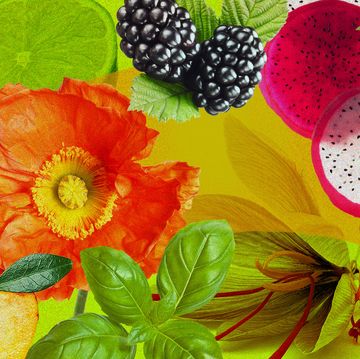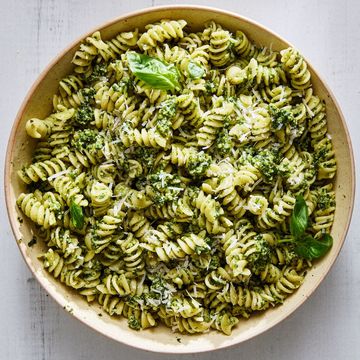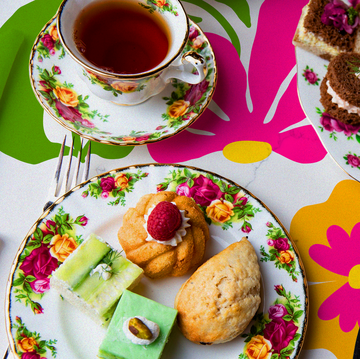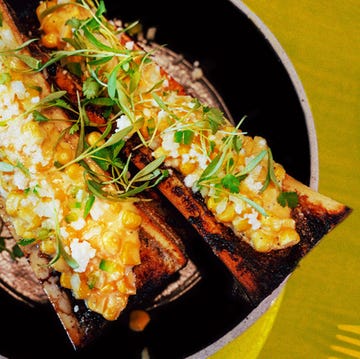There is more than one way to speak a language. The most well-known method, of course, is the actual process of learning a new alphabet. For me, as a Korean immigrant to the United States, that wasn’t too challenging at 8 years old. However, more difficult than training my tongue to pronounce “r,” “th,” and “f” was the act of culturally becoming American, an entirely different language in itself.
In Korea, my umma (mother) made us rice for breakfast with an array of banchans (side dishes) along with soup, usually something light on the stomach like kongnamul guk (bean sprouts soup) or miyeok guk (seaweed soup). It was a slow, sit-down meal that provided us energy for the day. I can still recall feeling the steam on my face as I scooped the hot rice onto my soup because that’s the way I loved eating it.
When I needed extra comforting because I wasn’t feeling well or just wasn’t in a good mood, umma made juk, a Korean rice porridge where white rice is stirred with water or stock, similar to oatmeal. This type of porridge is very popular in Korea as a light but hearty meal, often for breakfast. Something so common as rice and water always seemed to cure colds and any gloom I felt.
As I learned to fluently speak English with barely a hint of a Korean accent — even incorporating English sounds like “uh huh” and “yeah” — an unspoken language from Korea left me without me knowing. A few times a week, my elementary school served breakfast for lunch. Juk was definitely not on the menu. At first, my body rejected the sugary cereal they’d serve to the children. I forced myself to get used to it. “This is how you become American,” I told myself. “You speak the language. You eat what they eat. This is who you are now.”
The coldness of the milk shocked my throat, and the ultra-sweetness of the cereal was confusing as a breakfast dish, which I’d always associated with nourishment and warmth. After my taste buds submitted to the sugar, I started to eat cereal at home. My sister and I would walk up and down the cereal aisle in the grocery store, where boxes and boxes of bright colors and cartoon characters we didn’t recognize gazed at us. It felt like a toy store. Froot Loops. Cinnamon Toast Crunch. Kix. They had them all. Cereal transformed the way my sister and I ate breakfast each morning. Umma still cooked warm soup and rice before she and appa (father) headed off to work at the crack of dawn, but my sister and I opted for the crunchy candy-like cereal to start our day. A fast breakfast. The American way.
People gravitate toward food to experience a culture, but food is also a connection to one’s self. For so long, I wanted to force this bond to my American identity. Back in the 1990s, many of us didn’t have the privilege to wonder, “What does it mean to be Asian and American?” Such thoughts were a privilege. However, now we must be honest with ourselves and ask, “Do I even like this?” I fell in love with the idea of being American by eating American cereals. Honestly, I never truly enjoyed it.
A few years ago, I woke up one morning craving a bowl of juk. Just plain white rice simmered in water with a drizzle of sesame oil and soy sauce. I missed the sound of my umma repeatedly washing the rice, the toasted smell of rice grains as they’re being cooked over low heat, the nutty taste of sesame oil with a hint of salt from soy sauce, and the warmth of this healing food as it hit my tummy.
When I first made juk for myself after not having it for years, I was deeply moved by that first bite. I thought about the shortage of rice in Korea when Japan entered World War II, leading to heavy rations. Most of Korea’s land was earmarked to grow rice for the Japanese, leaving little for Koreans. This is when imports of other types of grains, such as millet and black beans, came to be.
I gave up eating something for breakfast that my ancestors and parents held as sacred. Forgoing juk for cereal was like trading gold for silver. I took this luxurious gift for granted. What my ancestors sacrificed, what my parents looked forward to before a long day of labor-intensive work has been with me all along. The resilience of each rice grain is the fabric of our story — and I never want the taste to leave my tongue.
These days, I spend more mornings basking in the aroma of the rice and sesame oil that reminds me of the earth, the grounds of Korea, and who I am as a Korean American. I don’t usually go to the trouble of making something like dakjuk (chicken porridge). I prefer mine with just rice and water. If I am inspired, I add a fried egg and sprinkle some sesame seeds and a splash of soy sauce with toasted seaweed. I make it my way because I now know there is no wrong way to be Korean American.
Breakfast Juk
Prep time: 1 hour. Cook time: 30 minutes. Yield: 1-2 servings.
Ingredients
- 1 cup white rice
- 1 egg
- 3 squares dried seaweed
- sesame oil
- soy sauce
- water or broth
Instructions
- Soak rice in water for one hour. Drain well.
- Lightly cover the bottom of a small pot with sesame oil, then add soaked rice.
- Stir-fry the rice at low heat for a few minutes before adding water.
- Bring water and rice to a boil.
- Simmer for about 25 minutes, stirring occasionally so rice does not stick to the bottom of the pot.
- Once liquid has reduced, and rice is the consistency of oatmeal, remove from heat. For a more liquidy texture, add more broth. The texture is based on your preference.
- Pan-fry one egg in sesame oil.
- Scoop the porridge into a bowl, then top it with the fried egg.
- Drizzle sesame oil on top of the egg.
- Add a splash of soy sauce to taste.
- Crumble seaweed on top. (I like to use unsalted seaweed because I can better taste the flavors of the juk.)
- Enjoy!
Kyunghee Kim is a Korean American poet, writer, and educator who has contributed to SheKnows, Insider, and Korean American Story.
Get Shondaland directly in your inbox: SUBSCRIBE TODAY
